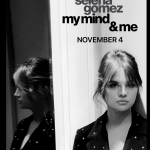A father’s wish magically brings a wooden boy to life in Italy, giving him a chance to care for the child.
Chuck says:
At a recent press conference, director Guillermo del Toro cited “Pinocchio,” “Frankenstein,” “Tarzan” and “The Count of Monte Cristo” as universal stories, ones that even if a person has not read the original novels, the basic outline of these tales is known by nearly everyone. These touchstones are ideal for conveying messages that appeal to a wide variety of cultures and as such, lend themselves to being slightly tweaked to reflect the storyteller’s concerns. Del Toro takes this approach in his version of “Pinocchio,” a gorgeously rendered, visually meticulous and narratively dense production that uses the magic of stop-motion animation to bring a new sense of life to this oft-told tale.
Much like the Robert Zemeckis version that debuted earlier this year, this Pinocchio is born out of grief. Still mourning the tragic death of his son Carlo some 15 years earlier, woodworker Gepetto (voice by David Bradley) drunkenly carves a grotesque, spindly wooden boy one night, mumbling that he wished his son were still alive. Of course, this request is granted by a being that is far more than a simple fairy (Tilda Swinton), but a creature more akin to Death.
This Pinocchio (Gregory Mann) is a far greater agent of chaos than the one seen in the Disney versions, creating turmoil at every turn, Gepetto at times regretting his ill-conceived wish. As the wooden boy stumbles into one problem after another he crosses paths with carnival owner Count Volpe (Christoph Waltz), who sees nothing but dollar signs after encountering him. The misadventures that ensue once Pinocchio enters show business break no new narrative ground.
However, del Toro and co-writer Patrick McHale introduce two themes that resonate. The film is a metaphor for fascism, the villagers, particularly Office Podesta (Ron Perlman) unthinkingly falling under the sway of Mussolini and his policies. Their strings may not be visible but they’re puppets all the same as they are controlled by this manipulative leader as well as fear.
Christianity and faith are also in del Toro’s crosshairs as Pinocchio is cast as a Christ-figure throughout. Asking why the villagers love the wooden body on the crucifix in the church that he and his father frequent but hate him despite being made of the same material may be an obvious correlation but is no less effective. More poignant is Gepetto’s crisis of faith. Never having gotten over the loss of his son and now having to contend with Pinocchio’s mischief, he can’t help but question the purpose of the church in his life, a notion many people wrestle with during trying times.
And while these variations in the narrative are compelling, the artistry of this project and the work that went into bringing it to life is astonishing. Shooting for nearly 1,000 days, the figures and sets used in the stop-motion process are a marvel. The minute details that have been rendered to give the setting a sense of age and history, the puppets’ ability to move and express emotion subtly and the dense mise en scene throughout contribute to an astounding aesthetic that brilliantly captures del Toro’s bittersweet vision.
The film’s warning of the danger conformity may be the film’s most obvious message but in the end, this “Pinocchio” is about life and death, how our existence is a precious gift though it may be plagued by tragedy and difficulties that tax us. As such, it should be lived on our own terms, our decisions dictated by no one, our happiness and even our troubles the result of the fate we choose. This is a hard lesson, but one of the most valuable, driven home by the film’s perfect and poignant ending, one that would make even a wooden boy, shed a tear.
3 1/2 Stars




